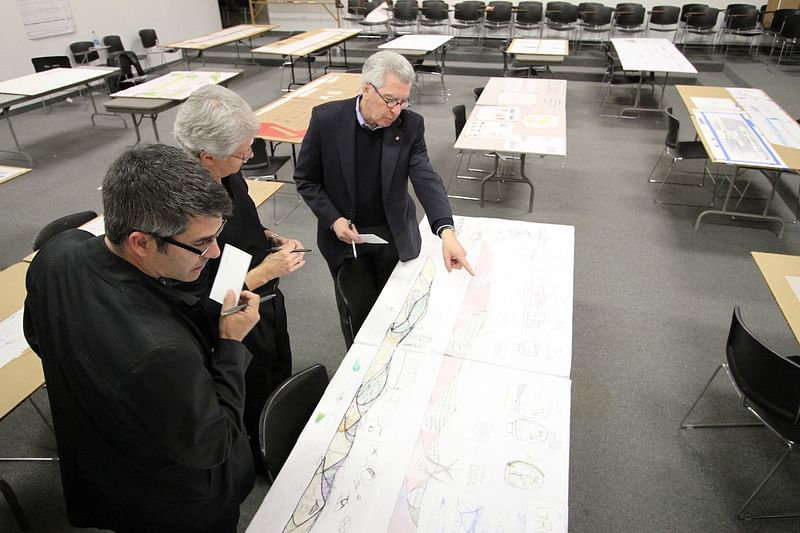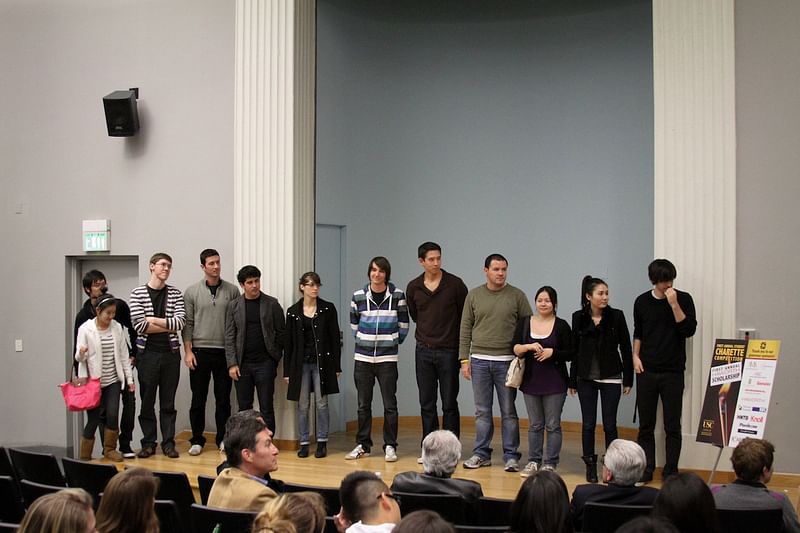USC School of Architecture Announces the Winners of First Student Charette Competition
By Bustler Editors|
Friday, Feb 11, 2011

Related
The University of Southern California’s School of Architecture is pleased to announce the winners of its First Annual Student Charette Competition, which is hosted by the program’s Architectural Guild. This group is the primary support system of the USC School of Architecture, and serves as a unique link between the students, faculty, and the professional community.
This exacting competition challenged fourth and fifth year USC School of Architecture students to conceive and create a Rail Studio, or a mobile design studio, without the use of technology. When the thirty-two students arrived, they were surprised with the theme, and in teams of two, the students were given seven hours to complete the project.

Finalists were chosen by a panel of judges including Ronald Altoon, founding principal of Altoon + Porter Architects, Ernest Cirangle, Sr. VP and Design Principal of HOK, Los Angeles, and Paul Danna, Principal of AECOM. The students were asked to present their designs before these judges and an audience. The first place winner received $5,000, second place received $3,000, and third place received $2,000.

Students were asked to reconsider how the nature of architectural discourse and education would change if it were translated from a static geo-local condition to one of dynamic movement embracing the changing age. Thus the idea of a train was considered not as an inert container merely for transporting students from location to location, but rather as a living organism that would mirror the vital growth of the students themselves.
Student teams were challenged to create futuristic and imaginary pre-fab design studios that would travel the country on train, bringing design to communities beyond the university. They were asked to design everything by hand using pencil and paper, as the competition challenged the students to convey the essence of their ideas without being dependent on technology. This forced the students to revert to the basics of drawing and design keeping them sensitive to their creations.

The idea behind this challenge was to create a program that would incorporate the goals of community outreach set forth by the Joint Education Program at USC, a program that combines academic coursework with hands-on experience in neighborhoods surrounding the university, with a design concept that forced the students to deal with issues of mobility and physically spreading design across the country in an appropriate setting.

"We wanted to create a program that really challenged the students and would encourage them to test the limits of innovation," said Dwight Bond, collaborative director at workSHOP design collective, LLC. "This subject matter had no pre-conceptions attached to it, so the students really had to get creative and imagine themselves travelling in one of these, and how the space would be best utilized."
"Partnering with the Architectural Guild and the school on this competition was a winning combination. There is great talent coming out of this architecture program," said Walter Cousineau of Haworth, Inc., and current Guild Board President. "It is Haworth's mission to support the future generations of our industry. We at Haworth are pleased to be part of the USC Student Charette Competition as it is consistent with our core values."

The project boards are on exhibit in the Verle Annis Gallery located in Harris Hall, USC from Tuesday, February 8th until today, Friday, February 11th. Viewing is open to the public from 9am-5pm.
The winners of the competition are:
1st Place - $5000 Cindy Man + Emilio Pulido (5th year students)
This team segmented each rail car with different interior layouts that would house various programs and be utilized as an expandable embracing community. Their train’s design has the ability to expand, conform, and plant itself in any community across the country by splitting in half and have the ability to fully rotate. The program design had the ability to be detached from the train allowing the studios to be rooted in the city as a permanent fixture.
2nd Place - $3000 Susie Loewenstein + Greg Creech (5th year students)
This team tailored the design of their train cars to be customized and targeted to the locations they would be visiting. For example the train going to Seattle would focus on rain water conservation, while in Miami, it would focus on solar collection.
3rd Place - $2000 Patrick Bourgeios + Alexandre Salice (5th year students)
These students focused on the stationary and the moving conditions of the studio and how they would be use to interact with the communities they visit. The mobile version being a collaborative environment between the student working together, and the stationary version would include a program where the students would be working with the community.
Images courtesy USC School of Architecture.

Share
0 Comments
Comment as :